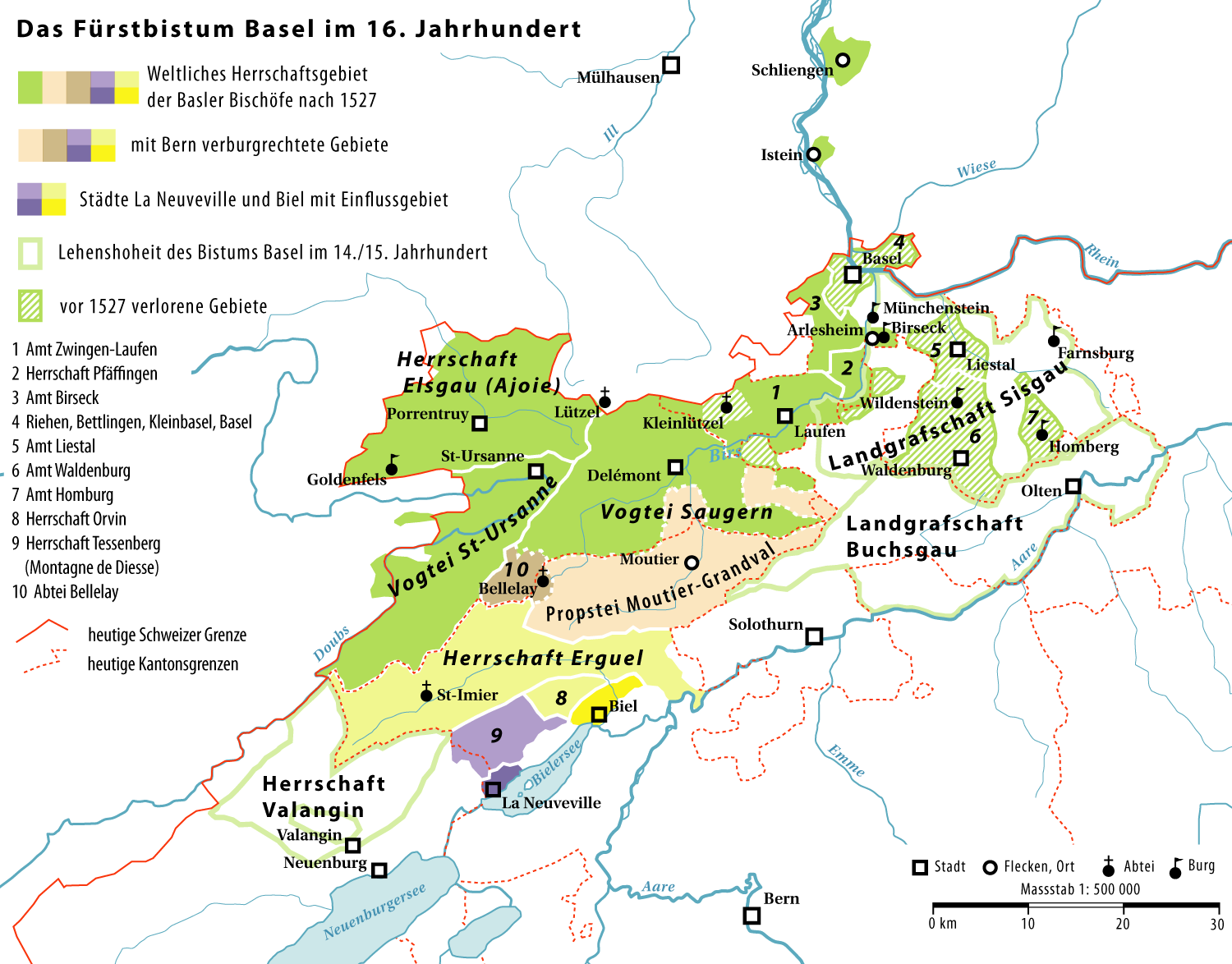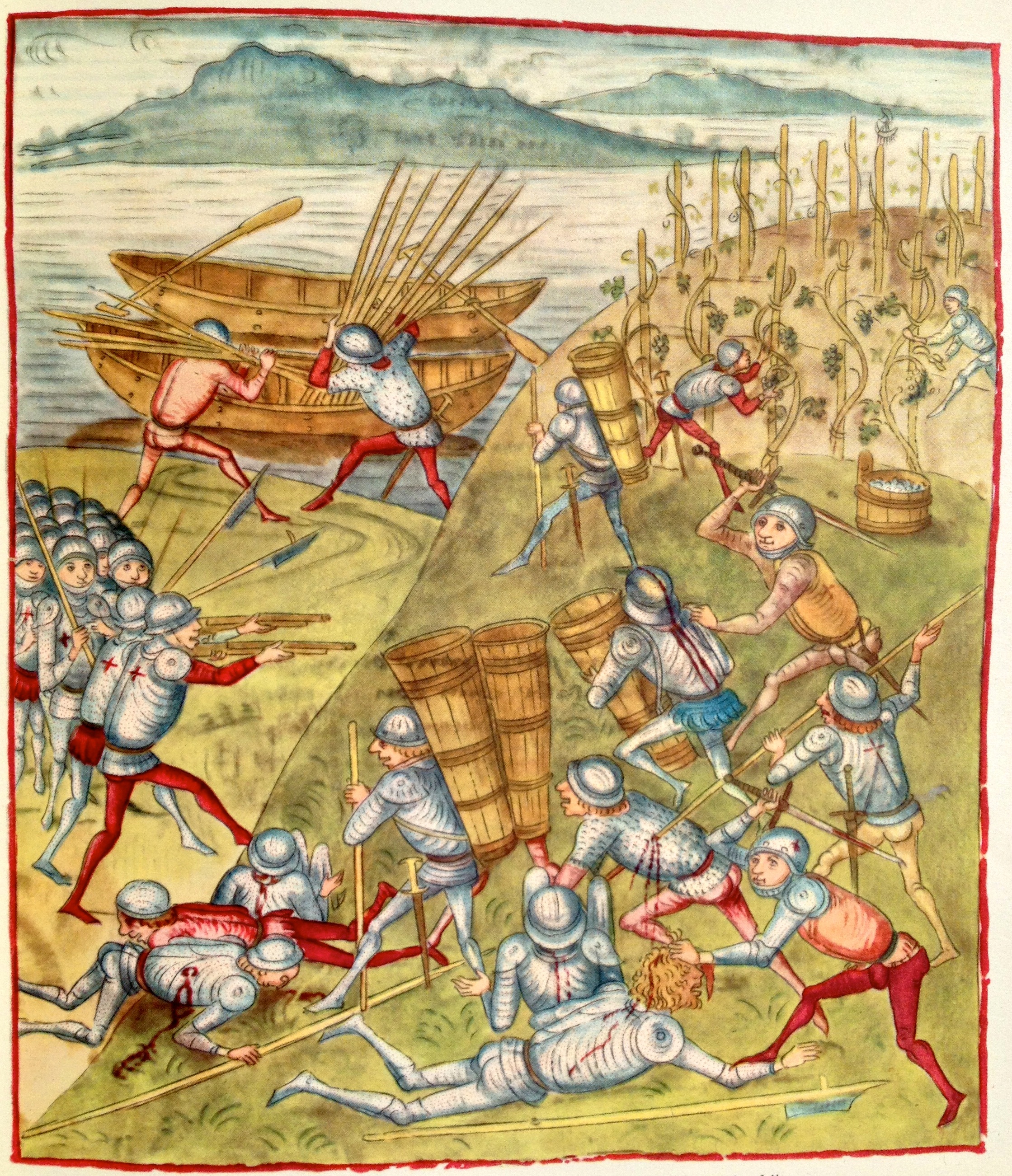|
Crémines
Crémines is a Municipalities of Switzerland, municipality in the Jura bernois (administrative district), Jura bernois administrative district in the Cantons of Switzerland, canton of Bern (canton), Bern in Switzerland. It is located in the French-speaking Bernese Jura (''Jura Bernois''). History Crémines is first mentioned in 1461 as ''Crimene''. The oldest trace of a settlement in the area are several Early Middle Ages, early medieval graves. For much of its history it was owned by the Provost (religion), provost of Moutier-Grandval Abbey. During the Middle Ages and into the Early Modern Switzerland, Early Modern era the Pré de Sales in Crémines was used as the dueling grounds for entire valley. In 1531 the village accepted the new faith of the Protestant Reformation along with the rest of the parish of Grandval. After the Campaigns of 1797 in the French Revolutionary Wars, 1797 French victory and the Treaty of Campo Formio, Crémines became part of the French Departments ... [...More Info...] [...Related Items...] OR: [Wikipedia] [Google] [Baidu] |
Jura Bernois (administrative District)
Bernese Jura (, , German: Berner Jura) is the name for the French-speaking area of the Switzerland, Swiss canton of Bern, and from 2010 one of ten Administrative divisions of Switzerland, administrative divisions of the Cantons of Switzerland, canton. Comprising the three French-speaking districts in the northern part of the Cantons of Switzerland, canton, it contains 40 municipalities with an area of and a population () of . More than 90% of the population of the three districts speaks French. From 1815 to 1979, the Bernese Jura comprised seven districts. Three of these seceded to form the canton of Jura in 1979, while a fourth, the Laufen district, joined the canton of Basel-Landschaft in 1994. Additionally, Moutier, a municipality, voted to secede from Bern in a referendum in 2021 and join Jura, with the change expected to be implemented by 2026. History Most of the territory of the Bernese Jura was passed from the County of Burgundy to the Bishopric of Basel in AD 999. It ... [...More Info...] [...Related Items...] OR: [Wikipedia] [Google] [Baidu] |
Grandval (Bern)
Grandval () is a Municipalities of Switzerland, municipality in the Jura bernois (administrative district), Jura bernois administrative district in the Cantons of Switzerland, canton of Bern (canton), Bern in Switzerland. It is located in the French-speaking Bernese Jura (''Jura Bernois''). Grandval also used to be known under its German name ''Granfel'' or ''Granfelden'', but these forms are no longer commonly used. History The oldest evidence of a settlement in the area is a reasonable well preserved section of a Roman road. Around 640 what became the Moutier-Grandval Abbey was established outside the village of Grandval. The town of Moutier then developed around the Abbey complex. Grandval is first mentioned around 900 as ''Grandemvallem''. The village chapel of St. Martin was first mentioned in 962. By the 14th century it had become the parish church for Grandval parish, which included most of the communities in the Grand Val/Moutier valley. In 1531 the village, its churc ... [...More Info...] [...Related Items...] OR: [Wikipedia] [Google] [Baidu] |
Corcelles (Bern)
Corcelles is a municipality in the Jura bernois administrative district in the canton of Bern in Switzerland. It is located in the French-speaking part of the canton in the Jura mountains. History Corcelles may have been first mentioned in 1181 as ''Corcellis'' though there is some debate over this mention. The village has always been part of the parish of Grandval. In 1531, the entire parish converted to the new faith of the Protestant Reformation. For most of its history, the village was owned by the provost of Moutier-Grandval Abbey. After the 1797 French victory and the Treaty of Campo Formio, Corcelles became part of the French Département of Mont-Terrible. Three years later, in 1800 it became part of the Département of Haut-Rhin. After Napoleon's defeat and the Congress of Vienna, Corcelles was assigned to the Canton of Bern in 1815. Iron has been mined and smelted in Corcelles for centuries. A hydraulic hammer mill operated in the village from 1791 until 1955. ... [...More Info...] [...Related Items...] OR: [Wikipedia] [Google] [Baidu] |
Vermes, Switzerland
Vermes () is a former municipalities of Switzerland, municipality in the district of Delémont (district), Delémont in the Cantons of Switzerland, canton of Jura (canton), Jura in Switzerland. The municipalities of Montsevelier, Vermes and Vicques, Switzerland, Vicques merged on 1 January 2013 into the new municipality of Val Terbi.Amtliches Gemeindeverzeichnis der Schweiz published by the Swiss Federal Statistical Office accessed 2 January 2013 History Very little is known about the early centuries of Vermes. The village is first mentioned in 769 by the name of ''Verteme'', supposedly derived from the Gaulish language, Gaulish word ''vertima'', meaning mountain top. It is again mentioned in 866 as ''Vertima'' and in 1308 as ''Vermunt''. ...[...More Info...] [...Related Items...] OR: [Wikipedia] [Google] [Baidu] |
Gänsbrunnen
Gänsbrunnen is a former municipality in the district of Thal in the canton of Solothurn in Switzerland. The French name for Gänsbrunnen is ''Saint-Joseph''. On 1 January 2021 the former municipalities of Gänsbrunnen and Welschenrohr merged to form the new municipality of Welschenrohr-Gänsbrunnen. Gänsbrunnen was one of the smallest municipalities in Solothurn. History Gänsbrunnen is first mentioned in 1428. Geography Gänsbrunnen had an area, , of . Of this area, or 29.5% is used for agricultural purposes, while or 66.5% is forested. Of the rest of the land, or 3.2% is settled (buildings or roads), or 0.1% is either rivers or lakes.Swiss Federal Statistical Office-Land Use Statistics 2009 data . Retrieved 25 March 2010 Of the built up are ... [...More Info...] [...Related Items...] OR: [Wikipedia] [Google] [Baidu] |
Mont-Terrible
Mont-Terrible () was a department of the First French Republic, with its seat at Porrentruy. The Mont Terrible for which the department was named is now known as , a peak of near Courgenay (now in the canton of Jura, Switzerland). The toponym of was formed by popular etymology from an earlier Frainc-Comtou ''Mont Tairi'', from "arid, dry". The department was created in 1793 with the annexation of the short-lived Rauracian Republic, which had been created in December 1792 from the imperial part of the Prince-Bishopric of Basel. In 1797, the former Württemberg-owned Principality of Montbéliard, which had previously been given to Haute-Saône, was reattached to Mont-Terrible, together with the remaining Swiss part of the Bishopric of Basel after the French attack to the Elvetic nation. The department was abolished in 1800. Its territory was annexed to the Haut-Rhin, within which it formed the two arrondissements of Delémont and Porrentruy. In 1815, the territory that ... [...More Info...] [...Related Items...] OR: [Wikipedia] [Google] [Baidu] |
Haut-Rhin
Haut-Rhin (); Alsatian: ''Owerelsàss'' or '; , . is a department in the Grand Est region, France, bordering both Germany and Switzerland. It is named after the river Rhine; its name means Upper Rhine. Haut-Rhin is the smaller and less populated of the two departments of the former administrative Alsace region, the other being Bas-Rhin (Lower Rhine), especially after the 1871 cession of the southern territory known since 1922 as the Territoire de Belfort, although it is still rather densely populated compared to the rest of metropolitan France. It had a population of 767,083 in 2021. On 1 January 2021, the départemental collectivities of Bas-Rhin and Haut-Rhin were merged into the European Collectivity of Alsace. History Haut-Rhin is one of the original 83 départements, created during the French Revolution, on 4 March 1790 through the application of the law of 22 December 1789 in respect of the southern half of the Provinces of France, province of Alsace (Haute-Alsace) ... [...More Info...] [...Related Items...] OR: [Wikipedia] [Google] [Baidu] |
Napoleon
Napoleon Bonaparte (born Napoleone di Buonaparte; 15 August 1769 – 5 May 1821), later known by his regnal name Napoleon I, was a French general and statesman who rose to prominence during the French Revolution and led Military career of Napoleon, a series of military campaigns across Europe during the French Revolutionary and Napoleonic Wars from 1796 to 1815. He led the French First Republic, French Republic as French Consulate, First Consul from 1799 to 1804, then ruled the First French Empire, French Empire as Emperor of the French from 1804 to 1814, and briefly again in 1815. He was King of Italy, King of Kingdom of Italy (Napoleonic), Italy from 1805 to 1814 and Protector of the Confederation of the Rhine, Protector of the Confederation of the Rhine from 1806 to 1813. Born on the island of Corsica to a family of Italian origin, Napoleon moved to mainland France in 1779 and was commissioned as an officer in the French Royal Army in 1785. He supported the French Rev ... [...More Info...] [...Related Items...] OR: [Wikipedia] [Google] [Baidu] |
Congress Of Vienna
The Congress of Vienna of 1814–1815 was a series of international diplomatic meetings to discuss and agree upon a possible new layout of the European political and constitutional order after the downfall of the French Emperor Napoleon, Napoleon Bonaparte. Participants were representatives of all European powers (other than the Ottoman Empire) and other stakeholders. The Congress was chaired by Austrian Empire, Austrian statesman Klemens von Metternich, and was held in Vienna from September 1814 to June 1815. The objective of the Congress was to provide a long-term peace plan for Europe by settling critical issues arising from the French Revolutionary Wars and the Napoleonic Wars through negotiation. The goal was not simply to restore old boundaries, but to resize the main powers so they could European balance of power, balance each other and remain at peace, being at the same time shepherds for the smaller powers. More generally, conservative leaders like Metternich also soug ... [...More Info...] [...Related Items...] OR: [Wikipedia] [Google] [Baidu] |
Moutier
Moutier () is a Municipalities of Switzerland, municipality in Switzerland. Currently, the town belongs to the Jura bernois (administrative district), Jura bernois administrative district of the Cantons of Switzerland, canton of Bern (canton), Bern. On 28 March 2021, the population voted to secede from the canton of Bern and join the Canton of Jura; the decision however is not immediately operative and entails a lengthy process of transfer of competences between cantonal authorities. It is currently the largest town in Jura bernois. History Moutier is first mentioned in 1154 in the phrase ''datum Monasterii''. In 1181, it was mentioned as ''apud Monasterium'' ('at the Abbey'). The German name for the town is ''Münster (BE)'', but it is not frequently used. The area was lightly settled even before the founding of Moutier-Grandval Abbey around 640. Much of the early history of the village is closely connected with the Abbey. Between 1049 and 1150, the Abbey was granted a stift or l ... [...More Info...] [...Related Items...] OR: [Wikipedia] [Google] [Baidu] |
Arquebus
An arquebus ( ) is a form of long gun that appeared in Europe and the Ottoman Empire during the 15th century. An infantryman armed with an arquebus is called an arquebusier. The term ''arquebus'' was applied to many different forms of firearms from the 15th to 17th centuries, but it originally referred to "a hand cannon, hand-gun with a hook-like projection or lug on its under surface, useful for steadying it against battlements or other objects when firing". These "hook guns" were in their earliest forms defensive weapons mounted on German city walls in the early 15th century. The addition of a shoulder stock, priming pan, and matchlock mechanism in the late 15th century turned the arquebus into a handheld firearm and also the first firearm equipped with a trigger. The exact dating of the matchlock's appearance is disputed. It could have appeared in the Ottoman Empire as early as 1465 and in Europe a little before 1475. The heavy arquebus, which was then called a musket, was d ... [...More Info...] [...Related Items...] OR: [Wikipedia] [Google] [Baidu] |




